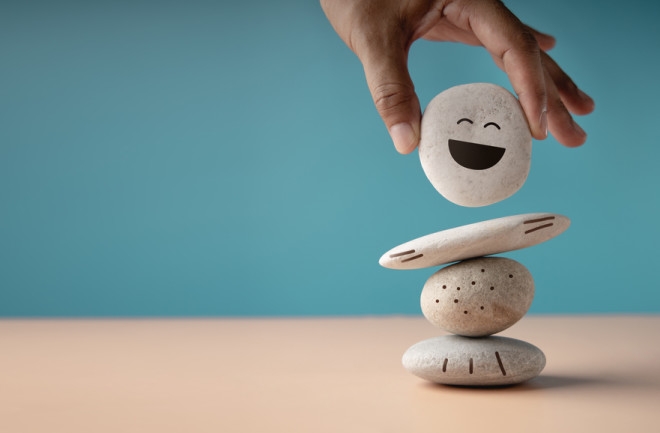By: Jaclyn Rink, MSCP, LLP
You’ve been seeing it all over social media and hearing friends, family and practitioners talk about it.
Dopamine. It’s the current buzz word that seems to be the magical fix for our problems.
- Struggling to get out of bed today? Probably a lack of dopamine.
- Need a mood boost? “Go get some sunshine for that dopamine!
- Curious about the ice-bath craze? “It spikes dopamine!”
But what exactly is dopamine, and how does it truly affect our well-being?
What Is Dopamine and Why Do We Crave It?
Dopamine is an extremely vital neurotransmitter in the brain and is linked to important processes such as sleep, energy, mood, movement, attention, and motivation.
Most notably, dopamine is linked strongly to the reward centers of our brain, and is the main chemical released upon experiencing pleasure.
Everyday Dopamine Boosters:
When we engage in an activity we enjoy (e.g., listening to music, baking, spending time with friends) dopamine increases.
High-Intensity Dopamine Spikes:
We can also participate in activities that increase dopamine at a much faster/intense rate; this includes activities such as intense exercise, thrill-seeking adventures, ice plunges, sex, and substances.
When we have a balanced level of dopamine, an individual should feel fairly motivated, happy, and alert. When dopamine levels are low, an individual may experience lethargy, depression-like symptoms (e.g., negative thoughts, trouble starting tasks, moodiness) and anxiety.
No wonder we are all seeking out this coveted chemical, we all just want to feel our best!
When Dopamine Becomes Too Much
However, too much dopamine on the daily can be detrimental to our mental health. Individuals with elevated dopamine levels are more likely to engage in aggressive, competitive, and impulsive behaviors.
Chronically elevated levels can lead to problematic addictive behaviors such as gambling, using substances and binge-eating, as well as other issues such as insomnia, anxiety, altered thinking, and mania.
It’s like the age-old adage says “too much of anything, is a bad thing.”
The Brain’s Feedback Loop: Why We Keep Chasing Highs
Since this chemical is linked to our brain’s reward systems, it naturally reinforces our behavior. Your brain says to you,
“Hey! Whatever you just did? That was amazing! Do it again!”
The downside of too much dopamine is that once we start to continuously experience this elevated feeling, life may no longer feel good enough when our body is functioning at a “normal” dopamine level. If our everyday baseline increases, the moment we fall below that baseline, we begin to feel unsettled, even if what we are experiencing is completely normal. It’s like once you get an A+ on an assignment, everything after that feels “sub-par” even though it’s not typical to get an A+ every time. So now, every B you get, just doesn’t compare to the high you got when you saw that A+. If your brain can’t seem to re-adjust to accepting B’s as good enough, you may then begin engaging in excessive unhealthy behaviors in order to obtain that A+.
Let’s use an example with one of the newest dopamine increasing trends: Daily ice baths.
Ice Baths and Dopamine: A Real-Life Example
You take the plunge. It’s cold. It’s horrible, but WOW!
Throughout the day, you notice that you have more energy, are more focused, productive and are in an overall better mood. You sleep like a baby. You repeat the next day, and the next. At this point, your body has experienced several days of extremely high dopamine levels.
Then Saturday hits, and you fall out of your routine. What does this day look like for you?
Maybe you experience a little brain fog, don’t get as much done, or maybe your mood doesn’t feel AS good as it did the day before. You’re disappointed in your day, and you will absolutely make time for an ice bath Sunday morning!
Your body has become accustomed to a new level of functioning, and an ice bath will now be preferred daily by your brain. However, that high level of which you have been functioning over the past few days is not sustainable, nor is it healthy to set the expectation for yourself to be that “on” all the time.

8 Healthy Ways to Boost Dopamine
Balance in the brain is key. While many of us DO need more dopamine in the brain, we don’t have to continuously engage in extreme behaviors (out of the ordinary) in order to obtain optimally healthy levels of this chemical. Here are some activities that stimulate dopamine, without going overboard, and are easy enough to incorporate into your daily or weekly routine.
- Exercise: If you know me as a psychologist, you know that this is something I preach (and practice) frequently! Physical activity is one of THEE main ways to create dopamine in the brain. A mere 20 minutes of movement makes a big difference and improves both mental AND physical health in a myriad of ways. The key to sticking to it? Find an activity that you actually enjoy, and from time to time, step out of your comfort zone and try something new (e.g., take a Pilates class if you normally do yoga, find a different trail to hike, include a friend).
- “Beans, Beans the Miracle Fruit!”: Studies regarding the consumption of velvet beans and fava beans have proved a positive correlation with higher levels of dopamine in the brain when eaten in moderation (too much and you won’t feel so good)! These beans contain high levels of L-dopa, the precursor molecule to dopamine. Not a bean lover? I was able to find these in the store dried and salted (similar to a peanut) in a re-sealable bag for snacking. Beans can easily be smashed/pureed to add to burgers or thrown into salads, soups and salsas.
- Listen to music: You know those songs that literally give you the chills? Our body experiences aesthetic chills when our brain encounters a powerful emotion, characterized by a dopaminergic release. Brain imaging studies show us that listening to music increases activity in the brain’s reward system, which is filled with dopamine receptors. Spotify Playlist? Check!
- Get enough sleep: Dopamine naturally increases in the morning and declines the closer you get to bedtime. Therefore, a lack of sleep disrupts our natural dopamine rhythms related to alertness/wakefulness. Staying awake during late night hours significantly reduces the amount of dopamine receptors in your brain. Allowing your body to rest helps to build them back up to normal levels. As a friendly reminder, adults need 7-9 hours of sleep for optimal functioning.
- Snag some sunlight: Sunlight equals dopamine. It’s as simple as that. Getting sun in the early morning hours (8am to 10am) is the most bang for your buck and the safest for your skin. Morning sun has very little UV rays (which cause burning) and consists of highly saturated infrared and blue light.
- Eat a high protein diet: Protein is made up of amino acids, and one of them found in lean proteins, Tyrosine, can turn into dopamine with the help of some other enzymes in the body. Protein-rich foods such as turkey, beef, eggs, soy and legumes are high in this amino acid and have a positive correlation to dopamine production when consumed in large amounts.
- Limit alcohol and drug use: Substances like alcohol, drugs or cannabis can cause us to experience a dopamine “surge”, disrupting our brains homeostasis. Ongoing use of substances to increase dopamine levels can quickly become a slippery slope, especially if you have struggled with addiction in the past or are genetically pre-dispositioned. There is so much research on addiction, I could write for ages, but here’s a short summary of the neuroscience as it relates to dopamine: Your brain’s main purpose is to keep you alive, and it is so smart, that it will begin to adjust to chronic usage of substances. Since your brain is frequently becoming overwhelmed with dopamine, it begins to kill off dopamine receptors (the structures that “suck up” the dopamine for usage) in order to restore balance. Consequently, this can lead to feelings of anhedonia, causing us to seek out more substances in order to compensate for our low mood. Since dopamine plays a key role in our behavior, less dopamine receptors can also cause us to act in more impulsive, compulsive ways that further promote substance usage.
- Try something new: Let your sense of adventure get the best of you! Participating in things that you love to do, or even things that you enjoyed previously, is one of the most rewarding ways to boost your mood. Nothing seems fun anymore? I would encourage you to try something new! What about painting, learning a new language, reading a different book genre, hiking, visiting the local animal shelter, volunteering, planting, meeting up with friends, crocheting, re-decorating a room in your home, watching a favorite child-hood movie, trying a new recipe, playing a board game? The list goes on and on! As long as it makes you smile, do more of that! Isn’t that what life’s about anyways?
Healthy Happy Seeking!


